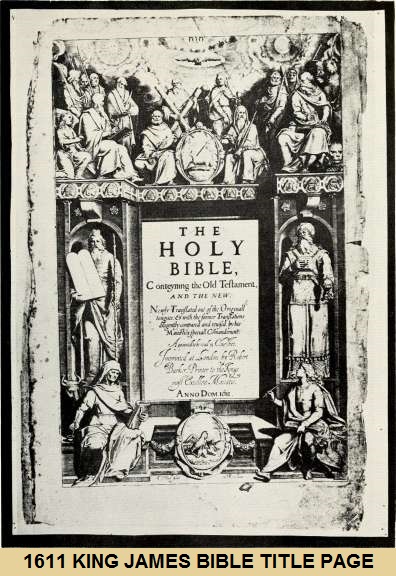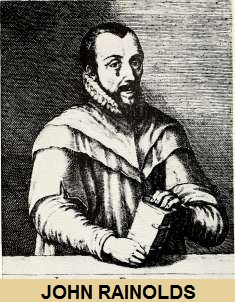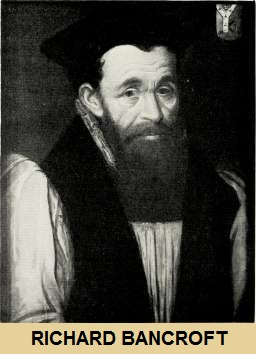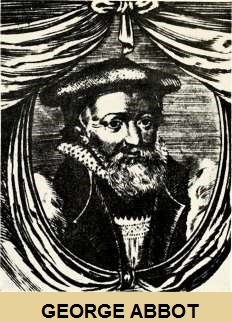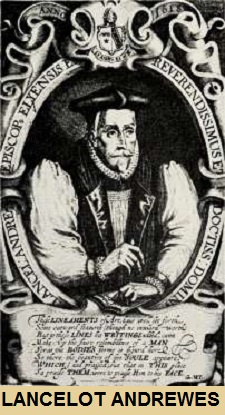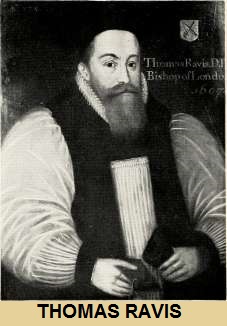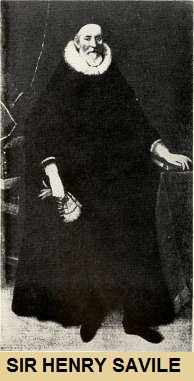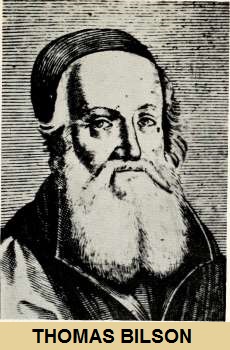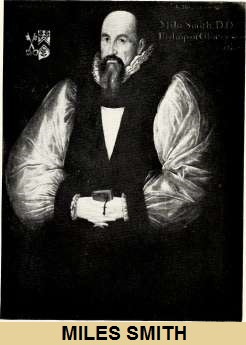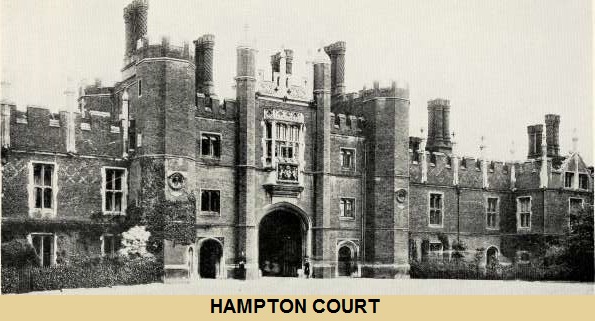
| Home |
What We Believe |
Our Purpose |
Contact Us |
Pages By Topic |
Pages By Title |
EARNESTLY CONTENDING FOR THE FAITH:
THE MEN BEHIND THE KING JAMES VERSION:
(Originally Titled "The Learned Men": The Text Here Used Is That Of "The Learned Men")
GUSTAVUS S. PAINE
Acknowledgments, Preface, Contents, Chapter 1
(A PDF Copy Of The Complete Book Is Available Here)
(A WordPerfect Copy Of The Complete Book Is Available Here)

|
THE LORD JESUS CHRIST IS GOD MANIFEST IN THE FLESH. THAT IS WHY HE IS GOD |
|
Do you know for a fact that if you were
to die today that you would not go to hell? If you do not know, click here. |
|
THE LEARNED MEN Gustavus S. Paine Thomas Y. Crowell Company New York . Established 1834
|
|
TABLE OF CONTENTS Grateful acknowledgment is made to the following: To the Bodleian Library, Oxford, to the British Museum, London, to the Lambeth Palace Library, and to Cambridge University Library for information and copies of original manuscripts. To the American Historical Society, New York, to the Folger Library, Washington, and to Yale University Library for the use of source materials. To the library of Union Theological Seminary, New York, and to the rare book room of the New York Public Library, for valuable aid in research. To Miss Margaret T. Hills of the American Bible Society, New York, for the loan of illustrative prints. To the National Portrait Gallery, London, for the portrait of Bishop Bancroft. To Dr. Frederick C. Grant of Union Theological Seminary for comment on the Bois notes. To the Public Trustee for the Estate of Bernard Shaw, and to the Society of Authors, London, for permission to quote from the preface to Adventures of the Black Girl in Her Search for God. And to Wanda Willson Whitman, the friend who has been associated with this book from the very start. It was she who suggested the original idea, nourished it with her interest and encouragement, and, when the author was no longer here to complete his work, edited the manuscript with skill, integrity, and affection.
For An Image With No Caption Click Here King James I o£ England and VI of Scotland, whose royal command in support of the Puritan proposal for a new Bible translation persuaded the bishops of the Church of England to approve the project. What good can it do us to know more about the men who made the King James Bible and about their work on it? Just how did these chosen men revise the Bible from 1604 to 1611? Who were these men and what were their careers? Were they happy, in their labor? Did they live with success after they finished it? How did it affect them? How does the King James Bible differ from Bibles before and after it? Could a group or groups turn out better writing than a single person? These are some of the questions I aim to answer in this volume. The King James men were minor writers, though great scholars, doing superb writing. Their task lifted them above themselves, while they leaned firmly on their subjects. Many have written in wonder about what they achieved. I quote here only from one ardent man with Bible learning, and from one who admired the product while he scorned ways of worship. Dr. F. William Faber: “It lives on the ear like a music that can never be forgotten, like the sound of church bells, which the convert hardly knows how he can forego. Its felicities often seem to be almost things rather than mere words. It is part of the national mind and the anchor of national seriousness. The memory of the dead passes into it. The potent traditions of childhood are stereotyped in its verses. The power of all the griefs and trials of a man is hidden beneath its words. It is the representative o£ his best moments; and all that there has been about him of soft, and gentle, and pure, and penitent, and good speaks to him for ever out of his English Bible.” H. L. Mencken: “It is the most beautiful of all the translations of the Bible; indeed, it is probably the most beautiful piece of writing in all the literature of the world. Many attempts have been made to purge it of its errors and obscurities. An English Revised Version was published in 1885 and an American Revised Version in 1901, and since then many learned but misguided men have sought to produce translations that should be mathematically accurate, and in the plain speech of everyday. But the Authorized Version has never yielded to any of them, for it is palpably and overwhelmingly better than they are, just as it is better than the Greek New Testament, or the Vulgate, or the Septuagint. Its English is extraordinarily simple, pure, eloquent, and lovely. It is a mine of lordly and incomparable poetry, at once the most stirring and the most touching ever heard of.” One of its great virtues is that it allows and impels us to put an^ part of it into other words, into our words, that we may get glimpses of more meanings from it and then turn back to it with more delight and profit than ever before. The King James men surpassed us in these respects, that they were scholars, and that they had Elizabethan command over language. At the same time they were like us, of the people, earnest, and at the bottom sweet and sound. We surpass them in our wide modern range of words. At present many urge us in all sorts of projects to “do it yourself.” I hope that as you read about these men and what they did you may feel the urge to create the Bible afresh for yourself, to revise the phrases in any way you please, and then to compare your wordings with what we have so long deemed our standard Scriptures. Thus you may keep the Bible alive for yourself, really be active as you read and study it, and be at one with the learned men, those common people who gave us their splendid best.
For An Image With No Caption Click Here Title page from the first edition o£ the King James Bible, showing Moses (left), Aaron (right), and the gospel writers.
For An Image With No Caption Click Here Doctor John Rainolds, Puritan, spoke at Hampton Court of the need for a new translation. Called the most learned man in England, Rainolds worked with the Oxford group that translated the Old Testament, but he died before the new Bible was completed.
For An Image With No Caption Click Here Richard Bancroft, Bishop of London, as a high churchman opposed Rainolds’ Puritan proposals yet moved with energy for the new Bible when the King approved. After the death of John Whitgift, Bancroft was rewarded with the Archbishopric of Canterbury.
For An Image With No Caption Click Here George Abbot, among the New Testament translators at Oxford, followed Bancroft as Bishop and became Archbishop in time to oppose the tyranny of Laud. His engraved portrait is from the title page of his book, A Brief Description of the Whole World, as published in 1656.
For An Image With No Caption Click Here Lancelot Andrewes, Dean of Westminster, chose many other translators and led the Westminster group translating from the Hebrew. Andrewes had been a chaplain to Elizabeth; he was a friend of Bacon and Spenser, and young John Milton wrote his elegy, when, in 1626, he died.
For An Image With No Caption Click Here Thomas Ravis, Dean of Christ Church and later Warden of New College, was head of the New Testament translators at Oxford. A high churchman, Ravis opposed Puritan teachings. He signed the document that asked promotion for another translator, Dean Thorne.
For An Image With No Caption Click Here Sir Henry Savile, considered the handsomest of the translators, had tutored Queen Elizabeth in Greek and mathematics. Provost of Eton, then Warden of Merton, he worked with the Greek group at Oxford, where he lectured on the Greek philosophers and Euclid.
For An Image With No Caption Click Here Thomas Bilson, Bishop of Winchester, worked with the Cambridge translators and was one of the two final editors. His high church views and zeal for the Establishment balanced the Puritan leanings of Miles Smith, who followed him in the see of Winchester.
For An Image With No Caption Click Here Doctor Miles Smith worked in the Oxford group that translated the Old Testament from the Hebrew. He also served as final editor of the whole translation and wrote the eloquent preface, “Address to the Reader,” which was part of the 1611 edition.
For An Image With No Caption Click Here Hampton Court, where the conference which sponsored new translation was held. The entrance gate pictured has been changed since it was built by Cardinal Wolsey.
At Hampton Court “May your Majesty be pleased,” said Dr. John Rainolds in his address to the king, “to direct that the Bible be now translated, such versions as are extant not answering to the original.” Rainolds was a Puritan, and the Bishop of London felt it his duty to disagree. “If every man’s humor might be followed,” snorted His Grace, “there would be no end to translating.” King James was quick to put both factions down. “I profess,” he said, “I could never yet see a Bible well translated in English, but I think that of Geneva is the worst.” These few dissident words started the greatest writing project the world has ever known, and the greatest achievement of the reign of James I—the making of the English Bible which has ever since borne his name. The day was Monday, January 16, 1604. The scene was the palace at Hampton Court, with its thousand rooms built by Cardinal Wolsey and successfully coveted by Henry VIII. King James was new to the English throne but his reign in Scotland had already brought him experience of religious differences. Those more than political considerations divided the people who thronged the roads and cheered the new king on his way from Edinburgh to London. Most urgent of the many pleas received during the royal progress was the Millenary Petition of the Puritans, called so because it had a thousand signers, a tenth of the English clergy. “The fantastical giddy-headed Puritans,” wrote the Archbishop of York to the Bishop of Durham, “are very eager that they may be heard.” Another religious faction, the English Roman Catholics, had sent from France a petition for more freedom. The king could overlook the Catholics, but the Puritans had been gaining ground for a generation and their demands were specific. They opposed Sabbath breaking and the keeping of other holy days, baptism by women in their homes, display of the cross in baptism, bowing at the name Jesus, and other practices considered high church or popish. James’s answer was to call a meeting to talk about what was “pretended to be amiss” in the churches. Because the plague was making havoc in London, where it was to kill thirty thousand, the meeting was first postponed and then set for Hampton Court, a safe distance from the plague-ridden city. In the huge rose-red brick palace hard by Hounslow Heath, with its stone gargoyles, twisted chimneys, mullioned windows, and cloistered walks, the king and his friends had reveled since before Christmas. For more guests than the thousand rooms could hold, tents stood in the superb gardens and the broad deer park. In December it was too cold and foggy to enjoy the tennis courts, the tilting ground, the bowling alleys beside the swift, chilly Thames. Even James, reared in the cold of Scotland, wore so many clothes that his weak legs could hardly bear the burden. But there was hunting with bows and arrows to warm the blood, and there was sport enough indoors, what with dancing, drinking, and heavy meals cooked in the long brick ovens. Fireplace heat was a comfort to those near it. Those away from it endured what the English called a frowst, of about sixty degrees. The air must have been heavy and stale for there is no record of baths in the palace, though the court used perfumes and pomanders and the king kept his hands soft as sarcenet by never washing them, merely dipping the royal fingers into bowls of attar and other balms. For the entertainment of the court, Shakespeare’s actors performed plays for a fee of twenty gold nobles for each day or night, with an extra tip of five marks from the king. After Christmas, in a masque called “The Twelve Goddesses” staged by Inigo Jones, Queen Anne and eleven maids of honor took part. They wore their hair down and many thought their gauze costumes scandalously sheer, although the queen wore over hers a blue mantle embroidered in silver with the weapons and engines of war. Flutes and viols played sweetly. Francis Bacon was present at this performance. The gay season, as brilliant as any in Elizabeth’s reign, immediately preceded the parley about church matters. Instead of asking the Puritans to send men of their own choice, James and his advisers named just four, among them John Rainolds, whom we may justifiably call the father of the King James Bible. President of Corpus Christi College at Oxford, Rainolds was called the most learned man in England. With him to Hampton Court went Laurence Chaderton from Cambridge, who with Rainolds was to become a translator of the new Bible, and two other Puritans who were to have no part in it. The four were not admitted to the meeting until its second day. Confronting them were a group of fifty or sixty high churchmen, the lords of the council, deans, bishops, and even the Archbishop of Canterbury, rich old John Whitgift, though he was not far from death. The place of meeting was the king’s privy chamber, a large room in Henry VIII’s state suite on the east side of the clock court.* (*As George II altered this part of the palace, no one can now see the spot where Rainolds stood when he proposed the translation. The best account of that day was written by William Barlow, Dean of Chester, who also was to become a translator.) The chief speakers were Richard Bancroft, Bishop of London, Rainolds, and the king. James, at thirty-seven an old young man who sputtered because his tongue was too large for his mouth, came in and said a few kind words to the lords, and sat down in his chair which was somewhat removed from the cloth of state. Prince Henry, ten years old, sat near his father on a stool. The king took off his hat when he thanked Almighty God for bringing him into the promised land where religion was purely professed. When Rainolds’ turn came, some said that he spoke offhand of the new Bible, amid much talk of other matters. He stressed four points: that the doctrine of the Church might be preserved in purity according to God’s word; that good pastors might be planted in all churches to preach the same; that the church government might be sincerely ministered according to God’s word; that the Book of Common Prayer might be suited to more increase of piety. Though these points were hardly disputable, the meeting got into odd wrangles over lesser concerns. The Puritans, though not so much Rainolds, opposed wedding rings. James, who spoke of his queen as “our dearest bedfellow,” said, “I was married with a ring and think others scarcely well married without it.” James had a good time with jokes; when Rainolds, unmarried, questioned the phrase in the marriage service “with my body I thee worship,” the king said, “Many a man speaks of Robin Hood who never shot his bow; if you had a good wife yourself, you would think that all the honor and worship you could do to her would be well bestowed.” Rainolds won his laugh later when, in the argument against Romish customs, he said, “The Bishop of Rome hath no authority in this land.” Though all tittered at this remark, the king himself, like Rainolds and many others present, had been born in the Church of Rome; the faith the king defended was less than a century old. For all his solemn and flippant talk, James had really but one devout belief – in king-craft. Though Sir Edward Coke heard him say at the trial of Sir Walter Raleigh, “I will lose the crown and my life before I will alter religion,” the crown was his reason for being, and he had experienced enough extremes of religion to know there could be no easy definition of it. In Scotland he had turned from Romanism despite the fact that—or perhaps because—his mother was a Catholic. But in his homeland he had also known too much of Presbyterianism and rabid Calvinism. Perhaps he meant it when he said stoutly enough, “I will never allow in my conscience that the blood of any man shall be shed for diversity of opinions in religion.” But he did allow such bloodshed, in an era still bloodstained. After all, James was the son of Mary of Scotland, who helped bring about the death of his father, and he owed his throne to Queen Elizabeth, who had given the word to behead his mother. To make up for that tragic past he had now to maintain his own divine right as king, sitting among men who, though they knelt to him—Bancroft kept falling to his knees, and even old Archbishop Whitgift knelt— argued among themselves over matters about which he knew and cared little. As the day wore on, more and more points of difference came up. John Rainolds impugned the policies of Bishop Bancroft and urged that “old, curious, deep and intricate questions might be avoided in the fundamental instruction of a people.” Oddly, in view of his own historic position, one of Rainolds’ complaints was about the role of books. He was against freedom of the press because youthful minds must be protected. “Unlawful and seditious books might be suppressed, at least retained and imparted to a few, for by the liberty of publishing such books so commonly, many young scholars and unsettled minds in both universities and through the whole realm were corrupted and perverted.” Why should anyone read what is clearly wrong? Rainolds was for an elite to tussle with the hard sayings while the masses stayed calm, humble, almost dormant. Here the king was nearer modern thought and told Rainolds that, in taxing the Bishop of London that he suffered bad books, he was a better college man than statesman. Bancroft for his side denounced the Puritans to his Majesty as “Cartwright’s scholars”—their leader Thomas Cartwright had just died—“schismatics, breakers of your laws; you may know them by their Turkey grogram.” At the meeting the men of the Established Church of course wore their proper habits of office while the four Puritans showed their disdain for churchly garb by appearing in plain coarse fabric gowns. The Cartwright reference was serious because Cartwright had been the boldest of those who stormed against bishops; he thought the Church should have only elders. Worse, he thought the Crown should be under the Church. James knew well that the Church, with all its bishops, must be under him. Rainolds was Bancroft’s target because, it may be, Bancroft was loath to gibe at Chaderton, the other effective Puritan, who was his lifelong friend. Many of the learned men had long known each other. England at that time had only a few million people and ten thousand clergy, and friendships among scholars were widespread. Rainolds and Chaderton had gone to Cambridge together, and in a Town and Gown brawl Chaderton had saved Bancroft’s life, nearly losing his own right hand to do so. Of the other two Puritans present, Thomas Sparke sat and said nothing while the fourth, John Knewstubs, “spoke most affectionately but confusedly.” The royal ire rose first at Rainolds, though later the king learned to endure him. With his own party Rainolds lost some esteem because they considered that, awed by the place and the company and the arbitrary dictates of his sovereign, he fell below himself. But the king made his angry opposition clear. Sir John Harington, the genius who invented the privy, was present and wrote to his wife that “the king talked much Latin and disputed with Doctor Rainolds, but he rather used upbraidings than arguments The Bishops seemed much pleased and said his majesty spoke by the power of inspiration. I wist not what they mean, but the spirit was rather foul mouthed.” As the crossfire increased and the meeting got rougher, perhaps the king saw that a diversion was wanted and seized upon Rainolds’ one acceptable proposal to heal the breach. Or perhaps James, who thought of himself as a gifted Bible student, was sincere in seeing the need for a new translation even though the idea was advanced by the wrong side. Elizabeth before him had given some support to those who wished to see the Geneva Bible supplanted. James himself as a young man had tried his hand at making verses from the Psalms, and had written a commentary on Revelation. The English people were Bible readers. Even before Wycliffe’s Bible, the first in English, had enabled those who could read to know the Scriptures, early pieces in English had gone from hand to hand. The Wycliffe translation from the Latin text of the Vulgate was the foundation of Protestant thinking in England, its survival under ban and circulation in manuscript copies proof that the new Church was based upon a religious revolution and not merely the whim of a king determined to have a divorce the Pope forbade. An English Bible was one to be read by the common people. Educated men, high churchmen and university scholars and royal persons, not only read Latin easily but wrote and spoke it with ease. Their private prayers, not merely those of the Church, were in Latin; so were addresses to the king. As a boy in Stirling Castle, the young James who would grow up to be king of both Scotland and England complained that they tried to make him learn Latin before he knew Scots. The tongue of the Church was useful as a common language for visitors from foreign lands, provided they were of the educated class. But the same class distinction kept the common folk who knew no Latin from reading the Bible. William Tyndale was first to undertake a printed English Bible. Having studied under the great Erasmus at Cambridge, he began translation of the New Testament— from the original Greek and not the Latin translation. At first he hoped to get help from the Bishop of London, but Henry VIII and his bishops were not yet willing to let the people read. In 1524 Tyndale went abroad, a virtual exile, first to Germany where he saw Luther at Wittenberg and made arrangements to have his New Testament translation printed at Worms, using funds given him by a London merchant. Proscribed by Henry VIII, the first English New Testament to be printed had to be smuggled into the country, and what copies could be seized by the authorities were burned. At Marburg, Germany, Tyndale proceeded with Old Testament translations, and with books that set forth Reformation doctrines. Henry VIII meanwhile, although he had left the Roman Church, demanded that Tyndale be returned to England to be punished for sedition. Tyndale remained on the Continent but at Antwerp in 1535 he fell into the hands of Emperor Charles V, who thrust him into a dungeon near Brussels. He was shortly sentenced as a heretic, and died at the stake. His last prayer was, “Lord, open the King of England’s eyes.” Not all the Tyndale New Testaments were burned, and enough of them reached England, beginning in 1526, to make it certain that one day there would be an English edition. In 1535, the year of Tyndale’s death, Miles Cover-dale edited and produced on the Continent the first complete English Bible, based on Tyndale, the Vulgate, and Luther’s and Zwingli’s translations. As Coverdale was a diplomat, he dedicated the book to Henry, and had no trouble with English publication. However, the Coverdale Bible was popularly known as the Bugs Bible because of its reading of Psalm 91:5: “Thou shalt not nede to be afraid of any bugges by night.” Two revised editions appeared in 1537, carrying “the King’s most gracious license.” Still another Bible, more closely related to Tyndale’s pioneer work than Coverdale’s, appeared in 1537—the so-called Matthew’s Bible. This Bible also obtained a royal license and in a large folio edition published in 1541, called the Great Bible, was read in churches. But the household Bible of the English people was the one produced at Geneva in 1560, mainly translated by William Whittingham, who married Calvin’s daughter. Its popularity was due in part to its size—it was small enough to hold, while the church Bibles measured more than fifteen inches long and nine inches wide. Aside from its size, the Geneva Bible found favor among the followers of Calvin and Knox, but others found fault with its marginal notes and also with its wording. It was called the Breeches Bible because its reading of Genesis 3:7 was “and they sewed fig leaves together, and made themselves breeches.” At the time of the Hampton Court meeting, most Protestants, especially the Puritans, still read and defended the Geneva translation. In slurring it, James may have thought to balance his agreement with Rainolds by nettling them. Yet at least one rampant Puritan, Hugh Broughton, the famous Hebrew scholar, had called for a new Bible. As for the bishops, fifteen of them, as far back as 1568, had worked on a revision in the Bishops’ Bible. In 1584 they won royal sanction for their version [The following statement came from “The Learned Men” edition: They had failed, however, to win royal sanction for their version,], known as the Treacle Bible because it asked in Jeremiah 8:22, “Is there not treacle in Gilead?” James’s real reason for objecting to the Geneva Bible was rooted in his need to feel secure on his new throne. Some of the marginal notes in the Geneva version had wording which disturbed him: they seemed to scoff at kings. If the Bible threatened him, it must be changed. Away with all marginal notes! And indeed if you read them in the fat Geneva volume you will find many based on dogma now outworn. James may have had some right on his side; he was far from witless. So clever indeed was his handling of the meeting that, although he gave the Puritan pleaders no satisfaction and actually threatened to harry them out of the land, he appeared to some observers to lean toward them. Indeed, the dean of the chapel said that on that day the king played the Puritan. For their part the Puritans, with outward meekness and inner grumbling, found grace to yield enough to stay well within the Church of England. Yet after all the talk ended, it seemed they had won nothing. Indeed there was only one gain: the new Bible. Having spoken, James went on about his royal business, which had nothing to do with translating Scriptures. At Royston, not far from Cambridge, he was converting a priory mansion and two old inns, set in six hundred acres, into a royal shooting box. Royston he came to esteem beyond all places for the hunting of hares, rabbits, partridges, bustards, and plovers. But the king hunted at Newmarket too, where also there was horse racing. When he had to return to town for the first Parliament of the new reign, he occupied the new royal apartments in the Tower of London and there, in the Lion’s Tower, the king watched three dogs set upon a lion, which tore two of them apart. Time to decide about the Bible had to be found between these duties and pleasures, but the king knew how to delegate power. As soon as James showed approval of Rainolds’ proposal, the ambitious Bishop Bancroft suppressed his own adverse thoughts and prepared to carry out the royal will with zeal and dispatch. Robert Cecil, who had served Elizabeth, served James as well; James called him “my little beagle” and made him Lord Salisbury. With Cecil, Bishop Bancroft talked things over and chose the men to work on a proposal, perhaps casually broached, which the royal will had now raised to a splendid design. Tyndale’s prayer was now answered in full: James I had ordered what Tyndale died to do. Fervent for what his master wished, Bancroft wrote to an aide: “I . . . move you in his majesty’s name that, agreeably to the charge and trust committed unto you, no time may be overstepped by you for the better furtherance of this holy work. . . . You will scarcely conceive how earnest his majesty is to have this work begun.”
|
 |
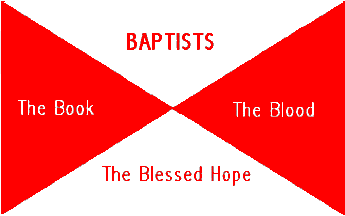 |
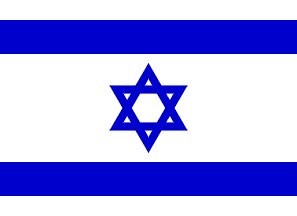 |
| Back To Top | Back To The Main King James Page | Back To Home Page |
| Back To Previous Page | Forward To Next Page |


